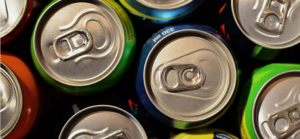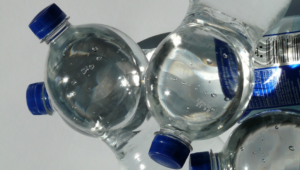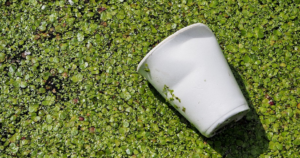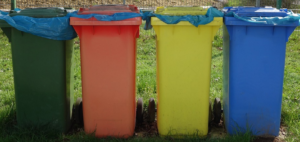
Recycling and the importance of biodegradable packaging has quickly become an integral part of our daily lives.
We’re significantly more environmentally conscious than we have been in previous years, so much so that we now routinely separate our waste into recyclable and non-recyclable materials.
But how much do we really know about the biodegradable materials we send into the recycling bin? And what does biodegradable mean?
Let’s take a look at exactly how many times the items we throw away can be re-used, and just how much we’re helping the environment by taking responsibility for our waste.
Paper (5 to 7 Times)
Depending on its type and quality, paper can be recycled up to seven times before eventually being wasted.
Standard printed paper is the most recyclable, and can be re used right up until its fibres become too short or are weakened by the process. Even then they can be combined with other sheets in order to lengthen their life even further.
Newspaper sheets are the least recyclable, having already been weakened by the printing process, but even still they are routinely re-purposed – most notably into egg containers.
Aluminium (Indefinitely)
Aluminium is the third most abundant material in the world, as it’s found within the Earth’s crust. So, chances are, we won’t be running out of this vital component anytime soon.
Aluminium continues its awesomeness in its ability to be recycled indefinitely. The strength of the component means that it doesn’t get worn down or damaged by the recycling process, and can be repackaged as many times as we take the time to pop it in the right bin.
Other Metals (Indefinitely)
Similar to their aluminium counterpart, metals such as copper and steel can be recycled indefinitely without being weathered by corrosion.
The process is so straightforward that it’s actually cheaper to purchase recycled copper than new.
It’s a similar story with steel. The recycling process is so smooth that it can be melted down and repurposed within the hour.
Cardboard (3 to 4 Times)
Since cardboard is already highly processed, it can only be recycled a limited amount of times.
However, the material can still be repackaged for another round of usage up to four times.
Alongside this, recycling one tonne of cardboard can save up to 290kWh of energy, 46 gallons of oil and 9 cubic yards of landfill space.
There are some wax-coated versions of cardboard that can’t be recycled, but it can be composted so it’s always worth the effort.
Glass (Indefinitely)
Another member of the indefinitely group is glass. It’s incredibly easy to recycle glass for other uses, and similar to copper it’s cheaper to buy recycled glass than newly made.
There are a few glass based products that can’t be recycled however, so just be wary of popping smashed windows and vases into the recycling bin when collection time comes around.
Plastic (Once)
While it does depend on what plastic is being recycled, traditionally it can only be re-purposed into the same kind of item.
However, recycling the material even once is likely to save a considerable amount of landfill space so it’s most definitely worth that extra second of consideration.
Many companies actually use alternative plastics now in order to improve their environmental conscientiousness. These include PLA plastics, which is significantly better for our green earth than its traditional counterpart.
Polystyrene (Once)
Polystyrene is 95% air, but it does share 5% of its qualities with plastic – hence the similarity in recycling traits. That percentage of plastic can then be re-purposed into another object. Every little helps when it comes to environmental consciousness, so it’s worth popping it in the right bin when disposing of it.
We’re constantly reminded of the importance of recycling, so understanding exactly why it’s such a vital factor of modern life is essential.
Today, many companies make an effort to use biodegradable materials for their packaging in order to help improve our environmental consciousness.
Read More
If you’d like to learn more about recyclable materials or exactly why it’s important to both us and our earth, take a look at a few of our blogs below.
Sustainable Packaging: How Your Company Can Help the Environment








